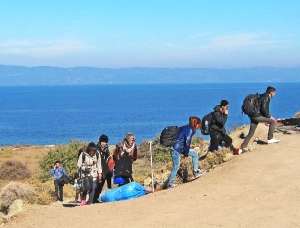After the American vice president Kamala Harris presented at the end of last week her economic program as a candidate for the position of the president of the USA, we wonder if what is called the Simion Plan still looks like a utopia - as economic and political analysts in our country say - or is it a feasible plan. While the US Vice President wants to give a bonus of $25,000 for the purchase/rental of a home by citizens, the construction of 3 million homes during the four years of the presidential term (unlike Joe Biden who promised 2 million homes) and the prohibition of large real estate companies to acquire housing complexes for the purpose of the subsequent rental of the respective premises, George Simion's program on zero interest on real estate loans and capping the prices of construction and purchase of residential housing seems soft in contrast to the one proposed by Kamala Harris.
Through the analysis of the two programs, we have identified the main areas of interest and the similarities between the proposed measures:
1. Housing Policies
2. Economic and Food Policies
3. Fiscal Policies
4. Health Policies
5. Policies for the Family
According to the above, the program presented by Kamala Harris focuses on ambitious measures, with an emphasis on direct financial support and strict regulations to prevent monopolies and support the middle class and essential industries. Still, the costs involved could deepen the U.S. budget deficit by $1.7 trillion to $2 trillion over the next 10 years, according to the Federal Committee for Budget Responsibility.
The George Simion plan, although similar in intentions in some areas, such as supporting SMEs and promoting local products, is perceived as more conservative, especially from the perspective of direct state interventions in the economy.
In light of the similarities above, the question arises: Is the Simion Plan a program copied from the Americans, or is Kamala Harris's program a populist one - as American experts claim - and thus is much closer to what the AUR leader proposes? Or do the plans presented by the two fit into a trend of current globalism, with policies to please the masses, regardless of the negative impact on the national economy and the state budget?
• AUR repositions itself in Simion's presidential campaign
If in the case of American Vice President Kamala Harris, the proposed program for US citizens represents a positive adjustment of the original plan of President Joe Biden, in the case of the Simion Plan we are talking about an adaptation of the AUR to the new requirements or promises made to the president of the political formation.
Thus, in the political program adopted by the AUR at the 2022 Congress, in the chapters on industry and energy, it was established: "The AUR will support the reindustrialization of Romania and the absorption of the national workforce. We will encourage economic flows capable of generating internal (national) relationship effects in other industries or services, in education, culture, etc.. We do not consider the project of industrial self-sufficiency feasible, but we will pursue Romania's specialization in high-tech products, in collaboration with external partners, so that the productivity is as close as possible to the real potential of the country. We will work closely with the Romanian Academy for the concrete establishment of sectoral policies. (...) AUR will regulate the price of energy and energy resources, until we have a mature market of independent producers, because it has been shown that massive price increases are not so much about the market economy as they are aspects of an economy of prey. Fossil power plants will be reengineered and restarted, through strategic partnerships, and nuclear energy will be developed through the completion of the Cernavodă Power Plant and through new projects, within the strategic partnership with the United States. We will develop programs to support energy autonomy at the household level, especially in rural areas. Energy considered "green" will be supported taking into account the cost-benefit calculation for the national economy, like any other economic activity".
However, the above provisions have now been nuanced or adapted, as can be seen from last week's presentation of the Simion Plan regarding the reindustrialization of Romania. George Simion spoke about the need for the large energy companies to return to the Romanian state's patrimony, even if this will lead to the payment of billions of euros in compensation following the international arbitration processes to which our country will be subjected.
George Simion said: "I consider the reindustrialization of Romania a national security issue and that is why we are putting the Simion Plan on the table, which provides, as a strategic priority, the recovery of national companies and natural resources and, from our point of view, is important for the future of the Romanian economy to invest in petrochemicals, in steel and in the food industry. (...) We need petrochemicals, metallurgy and we need the food industry. We need petrochemicals because we import bitumen from Hungary and Austria. We need petrochemicals, so that the construction of roads and highways is done with Romanian materials. We need concrete steel, which is no longer produced in Romania at the moment and can be produced in sufficient quantities in Târgovişte. We need the exploitation of all the raw materials that are found in Romania, and they are found in abundance. I give the example of copper, we also have copper in Apuseni, and in New Moldova and in other areas of the country. (...) We have graphite for all of Europe in Gorj. The key to these exploitations, from natural gas from Caragele and the Black Sea, to copper, graphite and salt, because I heard discussions about the bankruptcy of Salrom, the key is for the Romanian state to hold the majority stake. (...) We cannot create a petrochemical industry if another state (ed. - Austria) realizes its strategic plans at the expense of Romanians and the natural resources owned by Romania. No gas molecule must leave Romania. If we want efficient agriculture, we need fertilizers. They are more expensive today when they are no longer produced in Romania, to be combined, when jobs in Zimnicea, for example, or Slobozia are no longer guaranteed to Romanians".
Furthermore, last week the AUR leader even talked about reopening coal mines and coal-based energy production capacitiesgood, to reduce energy imports at high, speculative prices. We show that in the AUR program, it is stated that the political formation will only support "the construction of new hydropower plants and new gas-fired power plants of at least 2000 Megawatts", that it will follow "the completion of the construction works and the commissioning of all the planned reactors of the Central nuclear plant from Cernavodă, with the use of Romanian nuclear material, but also the possibility of building new facilities on the Siret, Mureş and Someş rivers", even that "it will support the obtaining of energy through innovative hydrogen-based technologies".
• Supporting corporations that bring added value to Romanians - a new GOLD target
Differences also appear between what AUR proposed in the program approved two years ago and what the Simion Plan now proposes regarding Romanian capital and the banking system.
Thus, the AUR program states: "We will support Romanian capital to increase and recover its share in GDP (currently below 45%) and to expand outside the country. AUR considers it of strategic interest to increase the number of business owners, domestic capital and strengthen the entrepreneurial spirit. Regarding foreign capital, we will especially promote direct investment, in capital goods, infrastructure and especially in industries and services with high technological content. Speculative capital will be tolerated as long as it serves Romanian refinancing interests. We will give importance to state companies, which have a strategic role in the national security plan, and we will reorganize them according to the principle of the hierarchy of competences, through depoliticization and reprofessionalization, and then we will recapitalize them to be able to fulfill their role in the country and abroad. (...) Romania currently has the lowest banking intermediation rate in Europe, at 26.8% compared to a European average of 85%, although the profit of Romanian banks, overwhelmingly with foreign capital, has a double profitability (10.87%) compared to the European average (5.8%). This means that the national economy, especially the Romanian capital, does not have satisfactory access to financing. The AUR will launch and implement the reform of the banking system, so that small and medium-sized entrepreneurs are supported, and there are no higher interest rates on loans to individuals, through local market speculation, than those in the Western states, which for us are a benchmark of reference (loans for houses, etc.). The banking system must be correlated with the cycle of economic production, without which financing becomes a risk factor, not a help".
Now George Simion states that AUR will be business partners for entrepreneurs as well, but also "for large corporations that want to be honest and bring added value and bring wealth to Romanians as well", without mentioning what that added value consists of.
Moreover, according to the Simion Plan, companies with a turnover of less than 5 million euros will pay a turnover tax of 2%, while companies with a turnover equal to or greater than 5 million euros will pay a profit tax of 16%. The 2% taxation of the turnover of companies with a turnover of less than 5 million euros will have a negative impact on small and medium-sized companies in our country.
Leaving aside the fact that the support granted primarily to Romanian entrepreneurs and state companies, to the detriment of companies in our country that have total, majority or minority foreign capital, would be considered by the European Commission as illegally granted state aid, we cannot help but notice that the Simion Plan also provides for a ceiling on bank interest, following the model of interest ceilings on IFNs, ceilings that would come at a time when the banking system has already been affected by the 2% tax on turnover that must paid until 2026, when it will be reduced to 1% of turnover.
We also mention that in the Simion Plan, it was initially mentioned that subsidized interest loans and state guarantees would be granted to families with three or more children for the purchase of housing, so that this measure would later be extended to all citizens.
















































